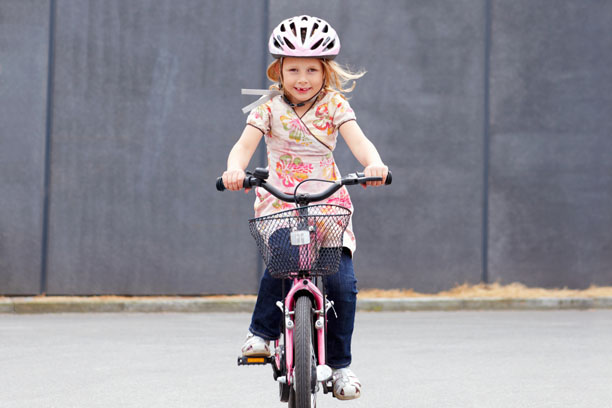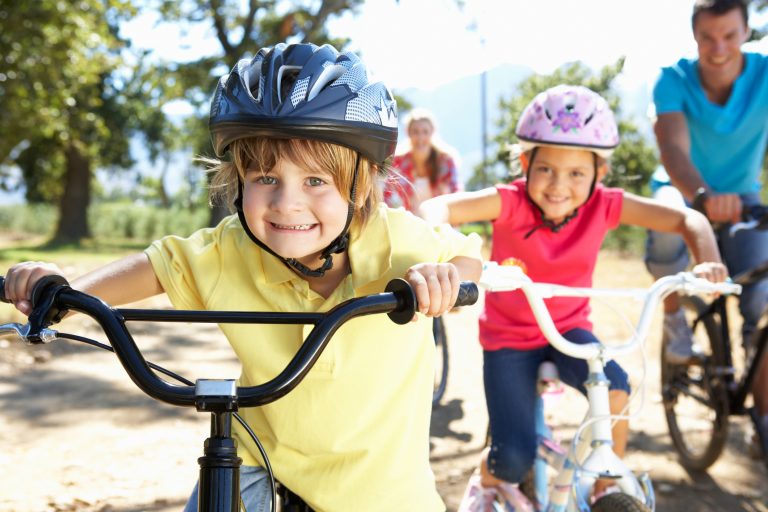Teaching a child how to ride can be life changing and open up a lot of doors for them. Remember, children learn by example so they may need you to show them how to do things first. Read our steps below on how to teach them, or download an information sheet.
1.The Bike
Our bike guide is here to help you choose the right bike for your child.

2. The Location
We recommend finding a traffic free, smooth, flat and wide location to teach your child to ride. Paved areas away from cars are ideal- like paths in parks, tennis or basketball courts. Grass is often thought to be the best for a soft landing (if the child falls over), but it’s harder for the child to build up speed for balance.
Also, consider a location where the child will not feel embarrassed or distracted, if their friends appear.


3. Braking
Before your child starts to move, it is a good idea to teach them how to brake.
- Coaster - used by pedalling backwards
- Hand Lever - used by squeezing on the lever.
4. The Riding
Learning Without Pedals
- Begin with the child, scooting on the bike so they can get the feeling of balance.
- Once the child feels comfortable scooting, challenge them to lift their feet off the ground and coast. To make learning to ride fun, we suggest asking the child to count to a certain number or sing a song, and see how far they get while coasting.
- When scooting and coasting have become easier for the child, it’s time to teach them how to turn. We recommend placing cones out to steer the bike around.
Learning With Pedals
- Have the child stand over the bike, with one foot on the pedal in a 2 o’clock position and the other on the ground.
- Encourage the child to push down on the pedal to get themself moving - from there they should place their other foot on the pedal and continue pedalling. You should steady the child by touching their shoulders or bike seat. Do not grab hold - give some time for the child to get their balance by themself. This will take some time to practice.
- When the child feels comfortable with this skill, place cones out for the child to steer around. This will increase their balance and confidence in riding
5. Stopping
Now, the child knows how to move forward and brake - now it’s time to put these skills together.
Using cones again, place them in a line for the child to brake at. Get them to try this drill until there is limited wobbling.
6. Have fun!
Now the child can ride, it’s time to start cycling with them! We recommend short rides around the local park to start with.

